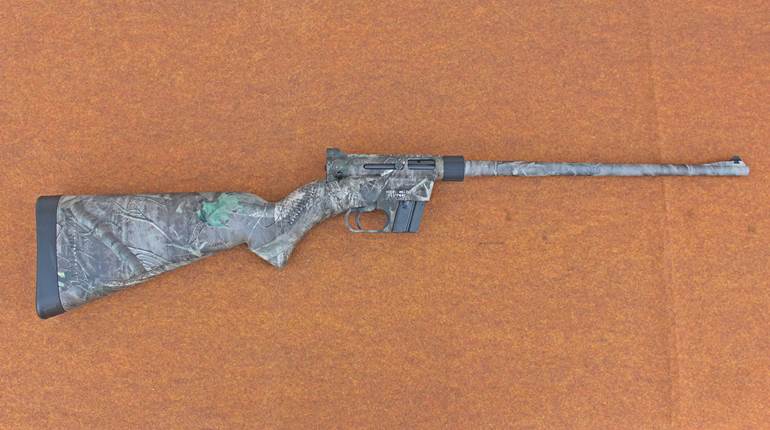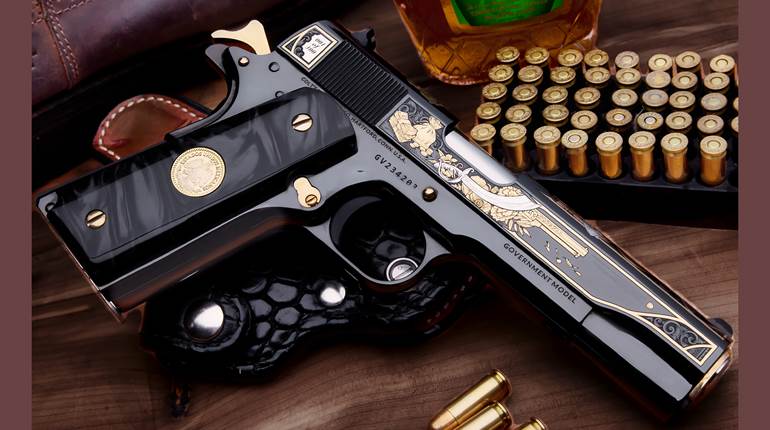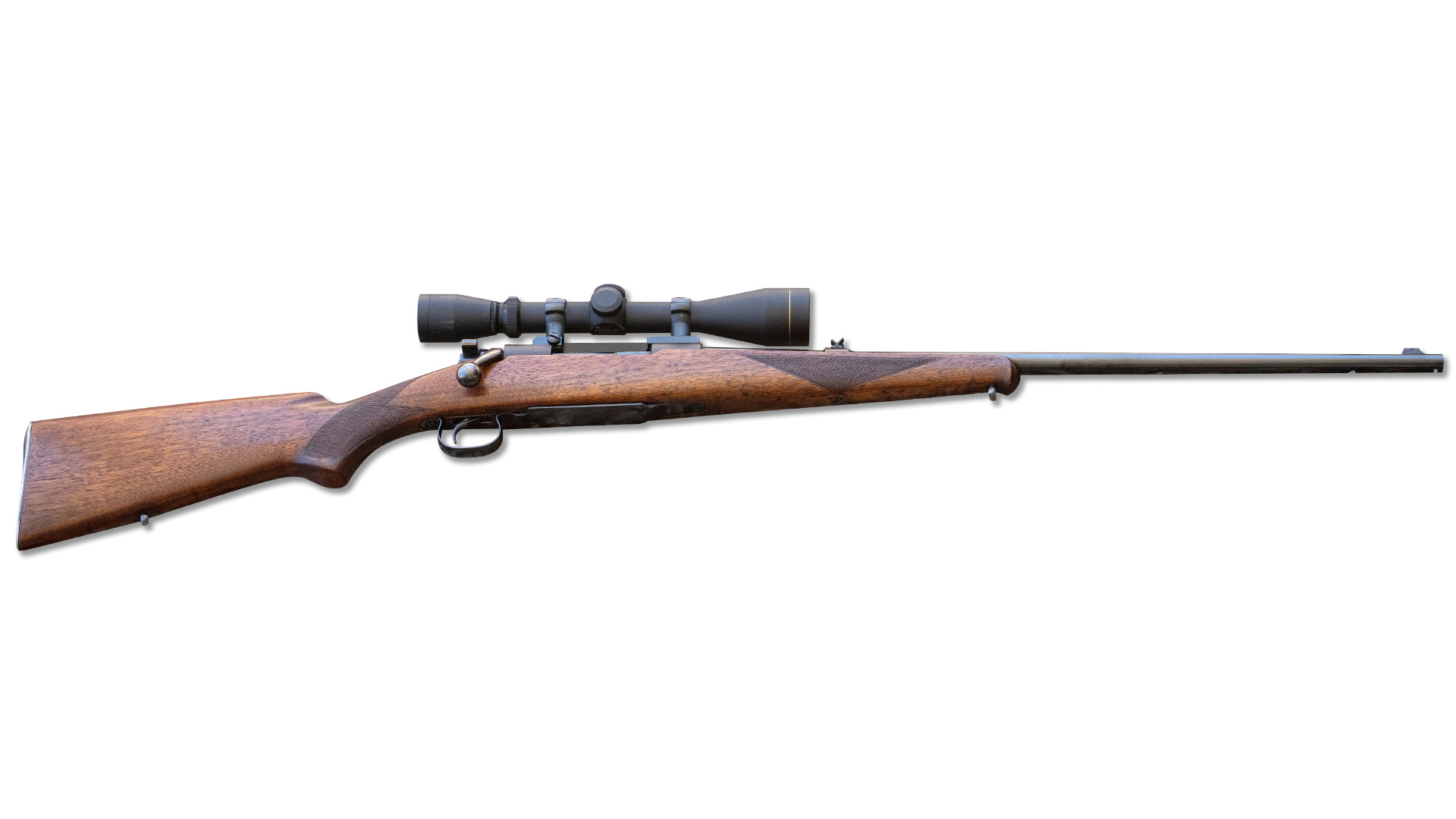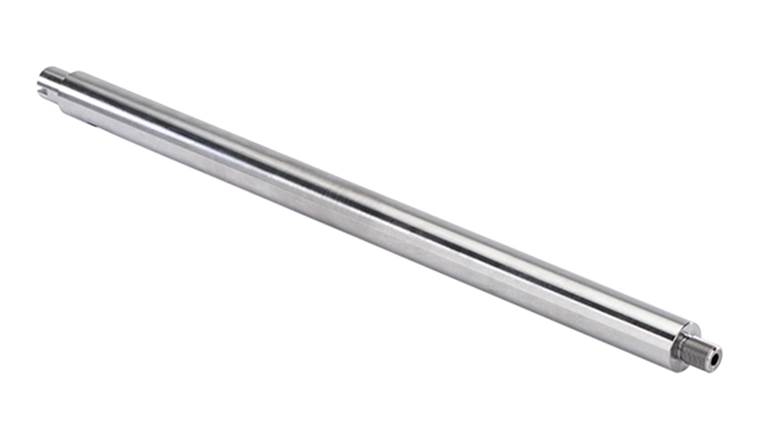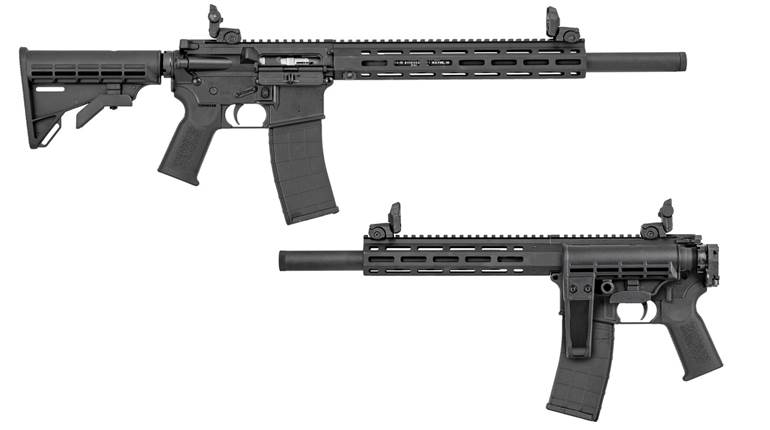
Hi-Point Firearms has been in the business of building inexpensive pistols and carbines for more than 20 years using 100-percent American-made components and a U.S.-based labor force. In a market where manufacturers can come and go overnight, this company's longevity speaks volumes.
But like any gunmaker with products that rest at one extreme or another, Hi-Point has had a polarizing effect. Loyal fans praise the simplicity, reliability and low retail cost of the platforms while others criticize the products for being bulky, aesthetically lacking, and for their less-than-stellar levels of accuracy.

The only way to settle the Hi-Point debate for myself was to give the guns a try. I set out with a plan to pull together a .45 ACP two-gun home-defense set at a minimum cost. After reviewing the company's catalog, the JHP45 pistol was paired with the 4595TS Pro version of the carbine for evaluation.
Both guns use the same nine-round single-stack magazines. The pistol ships with one magazine, while the PRO carbine ships with a total of three magazines, two of which can be clipped to the stock for quick access. If this set of two guns, four magazines and holster are purchased at the current suggested retail price, it costs a total of $618 (shipping and taxes not included), which is about the same price as one pistol from some other companies.
The JHP45 is a single-action, striker-fired pistol with a simple design. The fixed 4.50" blued steel barrel is attached directly to the high-impact polymer frame. The pistol operates using a straight blowback action without a breech lock or delayed blowback mechanism. The slide is held in place as the gun fires by its mass alone.

To provide enough weight to operate the action while keeping manufacturing costs down, Hi-Point employs a beefy die caste slide made of Zamak 3, a zinc alloy which includes aluminum, copper and magnesium in its composition. The slide is powder-coated with a matte-black finish. A single, round-wire recoil spring is installed with a short polymer guide rod.
The slide is topped with a three-dot sight system consisting of a yellow highlighted fixed front sight and a fully adjustable polymer rear sight with orange highlights. The rear sight can be traded out for a polymer peep sight provided with the pistol.
The polymer frame features lightly textured removable grip panels, a short, molded-in accessory rail for lights or lasers and a finger rest along the front of the trigger guard. The skeletonized polymer trigger of this particular pistol exhibited a trigger pull of 5 lbs. 12 ozs. that was mushy with a break and reset that were not clearly discernible.

The controls consist of a thumb safety lever and round-button magazine release, both of which are found on the left side of the frame. This pistol locks open when the last shot is fired. If the slide is held open with an empty magazine, the magazine must be removed for the slide to close.
The magazine release allows the magazines to drop free when depressed. The thumb safety swings down into the Fire position. Moving the lever up into the Safe position will block both the trigger and slide from cycling. Other safeties include an internal sear safety to prevent the gun from firing if dropped and a magazine disconnect safety.
Field-stripping the JHP45 is accomplished by tapping out a takedown pin at the rear of the frame using a hammer and roll-pin punch. While it's not difficult to do, it's not quite as straightforward as the no-tools takedown other pistol designs provide.

This handgun is listed as weighing 35 ozs. on the website. However, the .45 ACP pistol I received weighed in at 46.2 ozs. on a digital postal scale with an empty magazine inserted. Although this much weight makes the JHP45 a fairly hefty handgun to hold and haul, it does do a good job of keeping felt recoil under control.
Mechanically speaking, the Hi-Point 4595TS Pro .45 ACP carbine is, for the most part, an elongated version of the pistol. The trigger, striker mechanism, controls and magazines are the same as the pistol, but there is no magazine disconnect, and the grip panels are fixed in place. The receiver is caste from Zamak 3 and covered with a sheet-steel shroud. The round bolt handle is located on the left side of the receiver. Like the pistol, the bolt locks open when the magazine is empty.
The fore-end, pistol grip and shoulder stock are all constructed from black, high-impact polymer. The carbine has a good deal of Weaver-style accessory rail space with a 3.5" rail mounted under the 17.5" barrel, a 4.5" rail at 6 o'clock on the fore-end, and a 9.5" sight rail. The iron sight system consists of an adjustable hooded post in front and a fully adjustable protected ghost ring sight in the rearward position. Other carbine models are available with scopes and lasers installed at the factory.

The shoulder stock is fitted with an unusual internal recoil buffer system. The polymer buttplate is held in place by three spring loaded posts that allow for about half an inch of movement between the plate and the main body of the stock. This system is quite effective at taming felt recoil but it will nibble your cheek if your face is not placed far enough forward along the stock. This particular carbine weighed in at 7 lbs. 13 ozs. with one empty magazine and exhibited a smooth trigger pull of 6 lbs. 9 ozs.
At the shooting range, the pistol and carbine both proved to be reliable with every variety of ammunition tested. Loads ranged from bulk-box practice rounds to high-performance hollow points. There were no malfunctions, the magazines operated dependably and the guns went bang every time. It's this lack of ammunition sensitivity that makes the Hi-Point platforms one of the top choices among the low-price options.
The company lists its guns as rated for +P ammunition, even though +P is not stamped on the guns themselves. However, a steady regimen of +P ammunition is going to wear the guns out more quickly than standard pressure loads.

I went about the accuracy testing for these guns in a different manner than usual. In most cases, the rifles and handguns are set in a bench rest and shot at prescribed distances based on their barrel length. But I already knew that Hi-Point has sacrificed pin-point, long-range accuracy for cost savings.
Therefore, setting up targets at 100 yards wasn't going to yield much in the way of practical information regarding acceptable levels of combat accuracy at home-defense distances. I also dismissed the idea of loading the guns with $3 per round ultra-high-performance ammunition to improve the group sizes. Simply stated, inexpensive guns are most likely to be fed budget-friendly ammunition.
Testing for the JHP45 pistol started at 3 yards, which is about how far it is across a bedroom to the door. Using practice-grade ammunition the bullet marks overlapped to form a ragged hole at this distance. Moving the target out to 7 yards caused groups to open up to around 1.5". At 15 yards the groups were hovering around the 3" mark. That’s a group size I would trust for defensive accuracy. With the targets set at 25 yards the groups spread out to about 5.5", which is, in my opinion, too large for dependable center-of-mass target strikes.

We usually test sub-compact pistols for accuracy at 15 yards. Even though the JHP45 is too big to fit in a mid-size pistol slot, I went ahead and rolled the targets back to 15 yards for the formal benchrest accuracy testing. HPR HyperClean 230-gr. jacketed hollow-points yielded the best single group of 2.53" with an average of 2.88". Winchester USA 230-gr. full-metal jacket rounds turned in an average of 2.93" followed by Wolf Performance 230-gr. full-metal jacket steel case loads at 2.95"
To check the accuracy of the 4595TS Pro carbine using the same ammunition, shooting started with targets set at 15 yards. This produced groups around 1.25" in size. Groups at 25 yards averaged 2.5" with groups at 50 yards opening up to around 5". Since I was sticking to a 3” size limit, formal accuracy testing took place at 25 yards. The Winchester USA load turned in a best single group of 1.50" with an average of 1.80". HPR was a very close second with an average of 1.84" followed by Wolf Performance at 2.61".
Pulling together a home-defense plan is serious business that requires careful planning and preparation. When selecting firearms, home defenders should use the best gear and ammunition they can afford. But if your funds are just too tight to invest in more expensive equipment, Hi-Point Firearms can get the job done at a low cost.
The .45 ACP models evaluated for this review functioned reliably with a variety of ammunition, produced sufficient accuracy for close-range defensive situations, and they shipped with more features than one might expect for the price. Spare magazines and a wide variety of accessories are available at the Hi-Point Firearms website.
Specifications
Manufacturer: Hi-Point Firearms Pistol
Model: JHP45 Pistol
Action: Blowback Operated Semi-Auto
Caliber: .45 ACP
Slide: Zamak 3 Alloy, Powder Coat Finish
Barrel: Blued Steel, Fixed
Frame: High-Impact Dupont Polymer
Trigger: Single-Action Striker-Fired
Front Sight: Fixed, Yellow Highlight
Rear Sight: Fully Adjustable Polymer, Orange Highlights
Barrel Length: 4.50"
Overall Length: 7.75"
Height: 6.15"
Width (Slide): 1.45"
Weight: 46.2-oz. with Empty Magazine
Capacity: 9+1 Rounds
Twist: 1:12” LH
Rifle Grooves: 7
Accessories: 1 Magazine, 1 Galco M5X Matrix Paddle Holster, Sight Adjustment Tool, Trigger Lock, Peep Sight, Trigger Lock, Owner's Manual
MSRP: $219
Manufacturer: Hi-Point Firearms Carbine
Model: 4595TS Pro Carbine
Action: Blowback Operated Semi-Auto
Caliber: .45 ACP
Receiver: Zamak 3 Alloy, Steel Shroud
Barrel: 17.5" Blued Steel
Trigger: Single-Action Striker-Fired
Stock: High-Impact Dupont Polymer with Recoil Buffer
Front Sight: Adjustable Hooded Post
Rear Sight: Fully Adjustable Peep Sight
Overall Length: 32.25"
Weight: 7- bs. 13-oz.
Capacity: 9+1 Rounds
Twist: 1:12” RH
Rifle Grooves: 9
Accessories: 3 Magazines with PP 45 Magazine Kit, Sling, Sling Swivels, Sight Adjustment Tool, Trigger Lock, Owner's Manual
MSRP: $399












